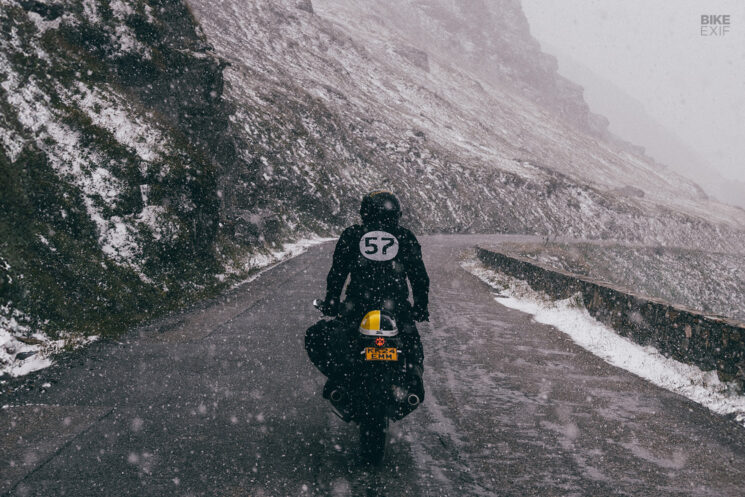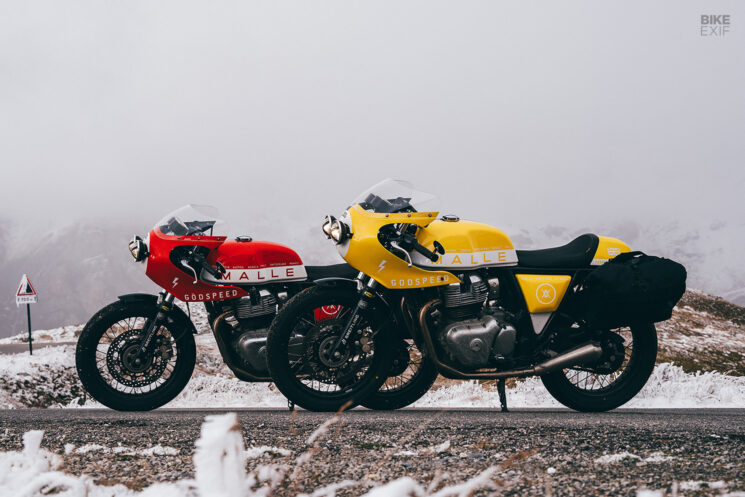
Whether they’re designing luggage or planning picturesque rallies through the European Alps, motorcycles are core to everything that Malle London does. But so is style. So it stands to reason that the vehicles Malle picks for their endeavors are as tasteful as the gear they create.
These two Royal Enfield Continental GT 650s were built as the official support vehicles for the fourth running of the Great Malle Mountain Rally. Ridden by the rally’s support engineers—Malle co-founder Robert Nightingale and deBolex Engineering’s Calum Pryce-Tidd—the bikes were designed to be the last out and last in on the six-day regulation rally.
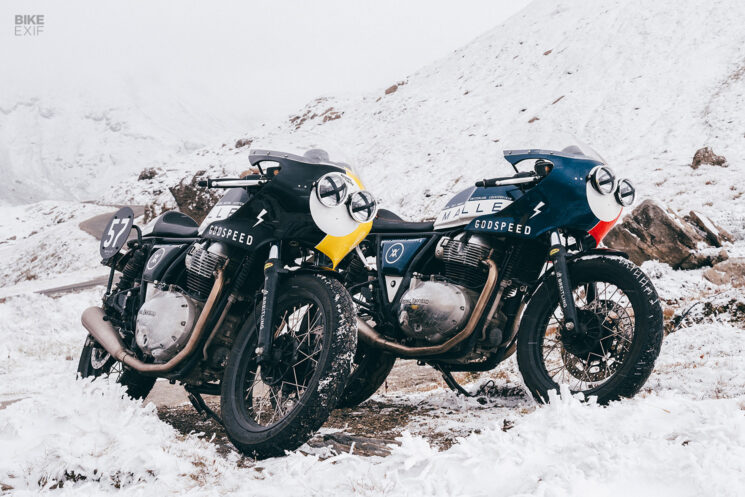
Starting in Austria and finishing in Monaco, the Great Malle Mountain Rally crosses six countries over 2,000 km [1,243 miles], rising thousands of meters above sea level with more turns and switchbacks than you can count. Malle’s long-standing partnership with Royal Enfield meant that the team had two brand-new Continental GT 650 donor bikes at their disposal.
Between the bike’s ‘Grand Touring’ designation, and the majestic regions that the Rally passes through, Malle’s thoughts immediately drifted to the endurance racing motorcycles of the 1970s. The bikes would need fairings that would help Robert and Callum cut through inclement weather, good lighting, and enough storage space for tools, medic kits, and extra fuel. They also needed to be instantly recognizable as support vehicles.
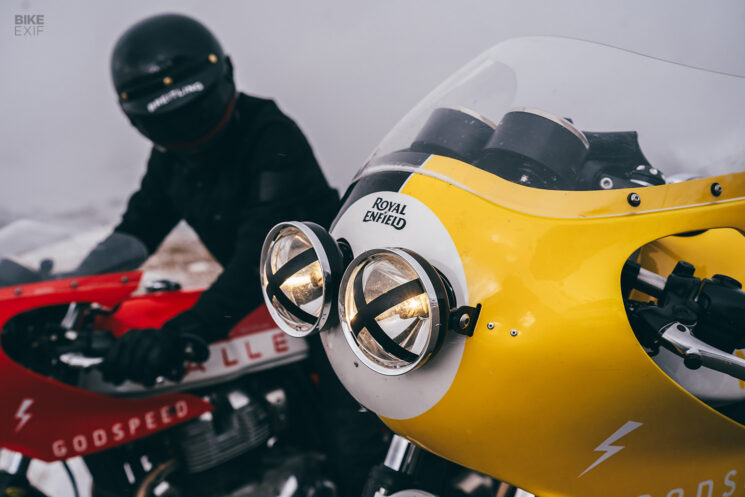
Malle started by outfitting each Royal Enfield Continental GT 650 with a modified aftermarket fairing. Twin spotlights were added to provide sufficient lighting—and to nail the classic endurance racer aesthetic.
The Continental GT has a beautifully sculpted fuel tank out of the box, so Malle left that alone. New saddles and tail cowls were added, along with trimmed rear fenders that host Motone taillights and license plate brackets. Tiny Kellermann LED turn signals were fitted to keep things tidy.
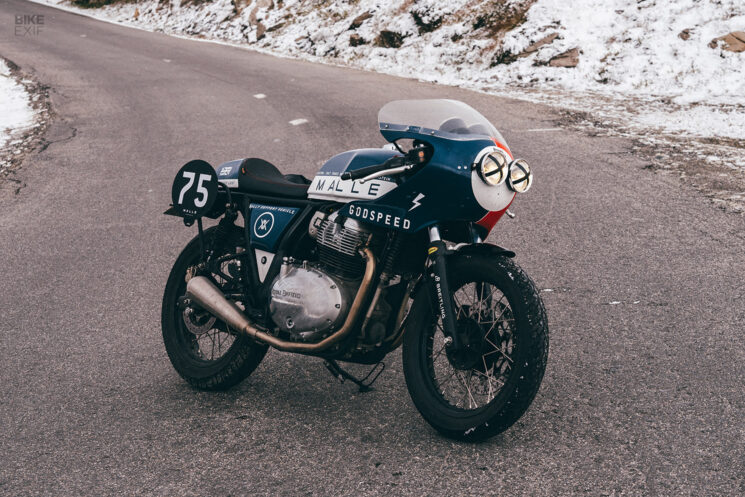
Malle didn’t want to fiddle with the Continental GT’s geometry too much. They just swapped the stock controls out for adjustable clip-ons and rear-sets from Harris Performance, giving them room to fine-tune each support rider’s bike.
Prioritizing reliability over speed, the twin-cylinder Royal Enfield engines were left stock. Malle simply fitted shorter exhaust mufflers, plus K-Tech suspension upgrades and Bridgestone BT46 tires to improve handling.
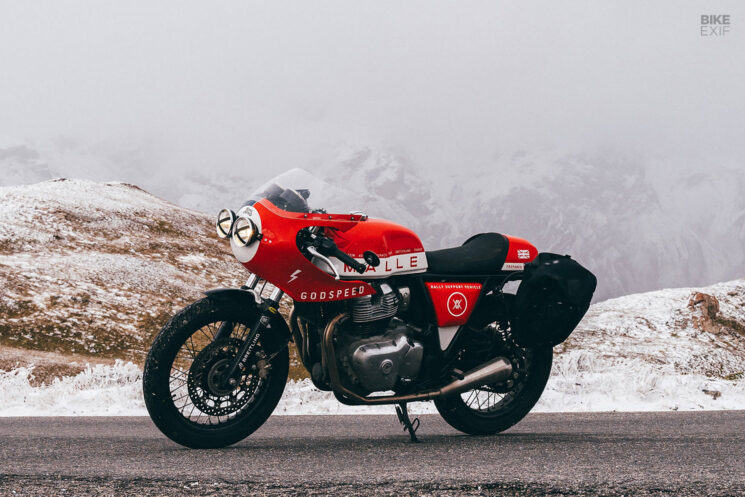
Finally, each support bike was kitted with luggage racks, featuring a number board on one side and a Malle Expedition pannier on the other, housing all the bits and pieces needed to handle roadside emergencies. The bikes were then painted in matching split liveries, inspired by the flags of the countries covered during the rally; Austria, Italy, Switzerland, France, Liechtenstein, and Monaco.
So how did the bikes perform? Robert fills us in on his longest day on the Rally: “As we departed the Rally camp in France on the morning of stage four, we set out in balmy, blue-sky, 29-degree [Celcius] temperatures. All intel informed us that the Col de L’iseran pass was open, but snow was a possibility. A backup Rally route was laid out in case of closures and the Rally teams departed, given the option to take the official rally route over the pass or a lower (and much warmer) route through the valley.”
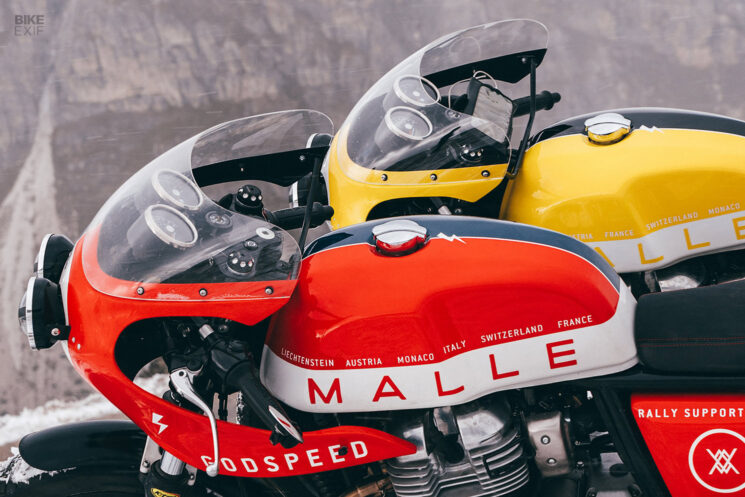
“As expected, all Rally teams chose to take the highest pass, and the first teams through reported back of very cold and windy temperatures, but no snow. Things were looking good. But hours later, after a few Rally teams had mechanical issues to support with, we only started the ascent much later in the day than planned.”
“Snow was now 100% on the forecast. By the time we reached the very top of the mountain pass, we were the final sweeper team of three, with Rally photographer Max Howard and the two bikes. A light dusting of snow soon turned into a snowstorm, with strong winds sending snow drifts across the road.”
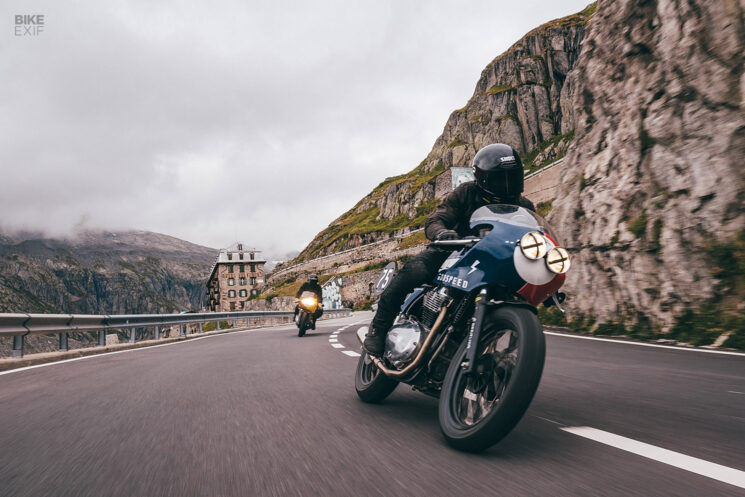
We stopped for a few minutes to catch a few shots at the highest point of the Rally. Minutes later the road below was gone; just a white blanket of snow across the Alps beneath us.”
“That was some of the slowest riding we’ve ever done in the Alps, slowly making our way through the snow, engine braking only, through ice-compacted tunnels, with strong gusts, snow being blown up under the visor, sending chills down your spine. Focusing on the road ahead, one kilometer at a time, trying not to look at the barrier-less roadside and the huge drops into the ravines below us. Cold, white-out, unnerving, but then suddenly quiet.”
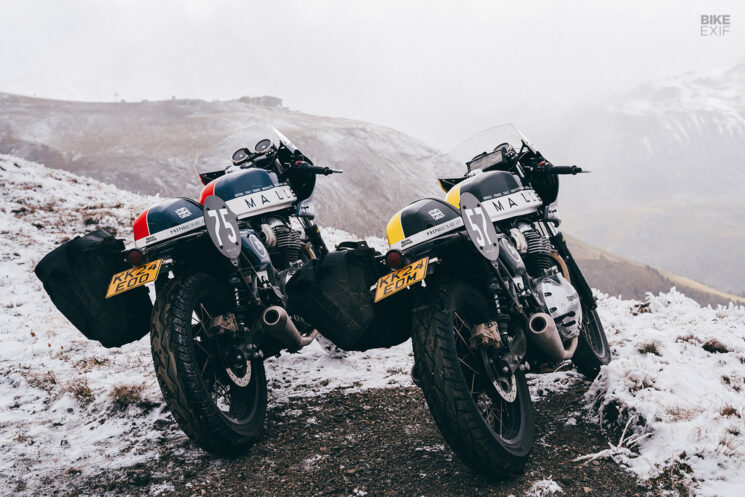
“The three of us stopped for a minute. We cut the engines—the strong winds had stopped and the view was majestic, the storm had passed and we had the mountain to ourselves. No one else was obviously crazy enough to be up here and we’d all gotten over the pass just in time, leaving a now snow-closed mountain pass behind us.”
“No sooner had we been riding up into the snow, than we were then back off the mountain, in a tiny Italian village, warming ice cold hands on strong Italian coffee and buzzing from the wild ride behind us.”
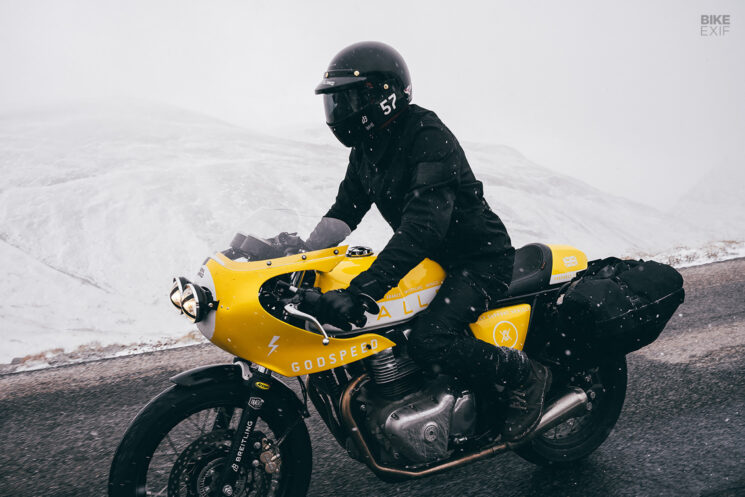
“As we reached the Rally Camp that night in darkness, we gently pushed open the huge oak doors, half expecting to receive disapproving looks from cold Rally riders that had been sent out to ride in snowy conditions in the middle of an Alpine ‘summer.’ The first rider greeted us with a huge high five; ‘Best day ever, man!’”
Malle London | Facebook | Instagram | Photography by Max Howard
